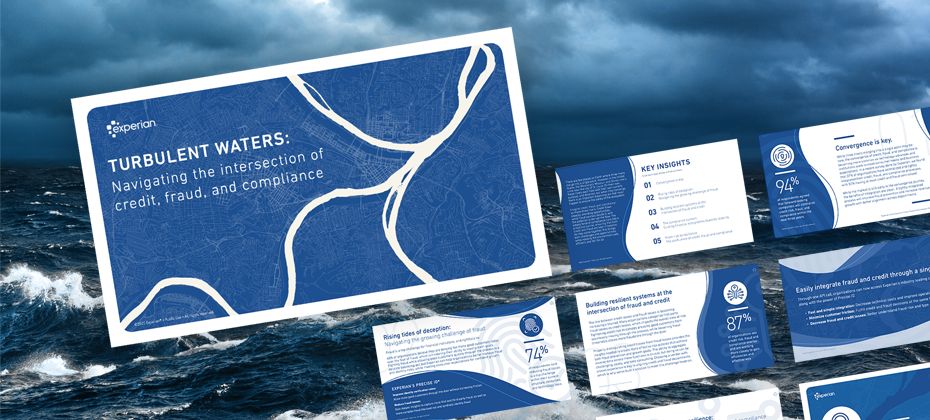 Intuitively we all know that people with higher credit risk scores tend to get more favorable loan terms. Since a higher credit risk score corresponds to lower chance of delinquency, a lender can grant: a higher credit line, a more favorable APR or a mix of those and other loan terms. Some people might wonder if there is a way to quantify the relationship between a credit risk score and the loan terms in a more mathematically rigorous way. For example, what is an appropriate credit limit for a given score band?
Intuitively we all know that people with higher credit risk scores tend to get more favorable loan terms. Since a higher credit risk score corresponds to lower chance of delinquency, a lender can grant: a higher credit line, a more favorable APR or a mix of those and other loan terms. Some people might wonder if there is a way to quantify the relationship between a credit risk score and the loan terms in a more mathematically rigorous way. For example, what is an appropriate credit limit for a given score band?
Early in my career I worked a lot with mathematical optimization. This optimization used a software product called Marketswitch (later purchased by Experian). One caveat of optimization is in order to choose an optimal decision you must first simulate all possible decisions. Basically, one decision cannot be deemed better than another if the consequences of those decisions are unknown.
So how does this relate to credit risk scores? Credit scores are designed to give lenders an overall view of a borrower’s credit worthiness. For example, a generic risk score might be calibrated to perform across: personal loans, credit cards, auto loans, real estate, etc. Per lending category, the developer of the credit risk score will provide an “odds chart;” that is, how many good outcomes can you expect per bad outcome. Here is an odds chart for VantageScore® 3 (overall – demi-decile).
| Score Range | How Many Goods for 1 Bad |
| 823-850 | 932.3 |
| 815-823 | 609.0 |
| 808-815 | 487.6 |
| 799-808 | 386.1 |
| 789-799 | 272.5 |
| 777-789 | 228.1 |
| 763-777 | 156.1 |
| 750-763 | 115.6 |
| 737-750 | 85.5 |
| 723-737 | 60.3 |
| 709-723 | 45.1 |
| 693-709 | 33.0 |
| 678-693 | 24.3 |
| 662-678 | 18.3 |
| 648-662 | 14.1 |
| 631-648 | 10.8 |
| 608-631 | 7.9 |
| 581-608 | 5.5 |
| 542-581 | 3.5 |
| 300-542 | 1.5 |
Per the above chart, there will be 932.3 good accounts for every one “bad” (delinquent) account in the score range of 823-850. Now, it’s a simple calculation to turn that into a bad rate (i.e. what percentage of accounts in this band will go bad). So, if there are 932.3 good accounts for every one bad account, we have (1 expected bad)/(1 expected bad + 932.3 expected good accounts) = 1/(1+932.3) = 0.1071%. So, in the credit risk band of 823-850 an account has a 0.1071% chance of going bad. It’s very simple to apply the same formula to the other risk bands as seen in the table below.
| Score Range | How Many Goods for 1 Bad | Bad Rate |
| 823-850 | 932.3 | 0.1071% |
| 815-823 | 609.0 | 0.1639% |
| 808-815 | 487.6 | 0.2047% |
| 799-808 | 386.1 | 0.2583% |
| 789-799 | 272.5 | 0.3656% |
| 777-789 | 228.1 | 0.4365% |
| 763-777 | 156.1 | 0.6365% |
| 750-763 | 115.6 | 0.8576% |
| 737-750 | 85.5 | 1.1561% |
| 723-737 | 60.3 | 1.6313% |
| 709-723 | 45.1 | 2.1692% |
| 693-709 | 33.0 | 2.9412% |
| 678-693 | 24.3 | 3.9526% |
| 662-678 | 18.3 | 5.1813% |
| 648-662 | 14.1 | 6.6225% |
| 631-648 | 10.8 | 8.4746% |
| 608-631 | 7.9 | 11.2360% |
| 581-608 | 5.5 | 15.3846% |
| 542-581 | 3.5 | 22.2222% |
| 300-542 | 1.5 | 40.0000% |
Now that we have a bad percentage per risk score band, we can define dollars at risk per risk score band as: bad rate * loan amount = dollars at risk. For example, if the loan amount in the 823-850 band is set as $10,000 you would have 0.1071% * $10,000 = $10.71 at risk from a probability standpoint. So, to have constant dollars at risk, set credit limits per band so that in all cases there is $10.71 at risk per band as indicated below.
| Score Range | How Many Goods for 1 Bad | Bad Rate | Loan Amount | $ at Risk |
| 823-850 | 932.3 | 0.1071% | $ 10,000.00 | $ 10.71 |
| 815-823 | 609.0 | 0.1639% | $ 6,535.95 | $ 10.71 |
| 808-815 | 487.6 | 0.2047% | $ 5,235.19 | $ 10.71 |
| 799-808 | 386.1 | 0.2583% | $ 4,147.65 | $ 10.71 |
| 789-799 | 272.5 | 0.3656% | $ 2,930.46 | $ 10.71 |
| 777-789 | 228.1 | 0.4365% | $ 2,454.73 | $ 10.71 |
| 763-777 | 156.1 | 0.6365% | $ 1,683.27 | $ 10.71 |
| 750-763 | 115.6 | 0.8576% | $ 1,249.33 | $ 10.71 |
| 737-750 | 85.5 | 1.1561% | $ 926.82 | $ 10.71 |
| 723-737 | 60.3 | 1.6313% | $ 656.81 | $ 10.71 |
| 709-723 | 45.1 | 2.1692% | $ 493.95 | $ 10.71 |
| 693-709 | 33.0 | 2.9412% | $ 364.30 | $ 10.71 |
| 678-693 | 24.3 | 3.9526% | $ 271.08 | $ 10.71 |
| 662-678 | 18.3 | 5.1813% | $ 206.79 | $ 10.71 |
| 648-662 | 14.1 | 6.6225% | $ 161.79 | $ 10.71 |
| 631-648 | 10.8 | 8.4746% | $ 126.43 | $ 10.71 |
| 608-631 | 7.9 | 11.2360% | $ 95.36 | $ 10.71 |
| 581-608 | 5.5 | 15.3846% | $ 69.65 | $ 10.71 |
| 542-581 | 3.5 | 22.2222% | $ 48.22 | $ 10.71 |
| 300-542 | 1.5 | 40.0000% | $ 26.79 | $ 10.71 |
In this manner, the output is now set credit limits per band so that we have achieved constant dollars at risk across bands. Now in practice it’s unlikely that a lender will grant $1,683.27 for the 763 to 777 credit score band but this exercise illustrates how the numbers are generated. More likely, a lender will use steps of $100 or something similar to make the credit limits seem more logical to borrowers.
What I like about this constant dollars at risk approach is that we aren’t really favoring any particular credit score band. Credit limits are simply set in a manner that sets dollars at risk consistently across bands.
One final thought on this: Actual observations of delinquencies (not just predicted by the scores odds table) could be gathered and used to generate a new odds tables per score band. From there, the new delinquency rate could be generated based on actuals. Though, if this is done, the duration of the sample must be long enough and comprehensive enough to include both good and bad observations so that the delinquency calculation is robust as small changes in observations can affect the final results. Since the real world does not always meet our expectations, it might also be necessary to “smooth” the odds-chart so that its looks appropriate.



